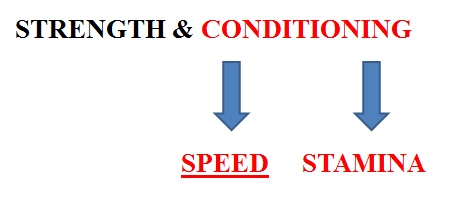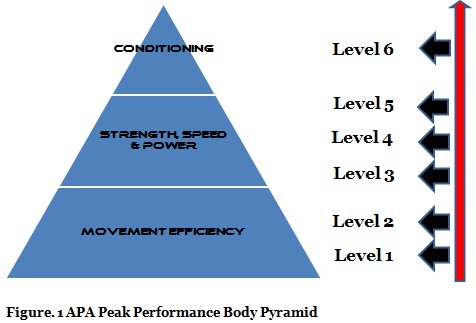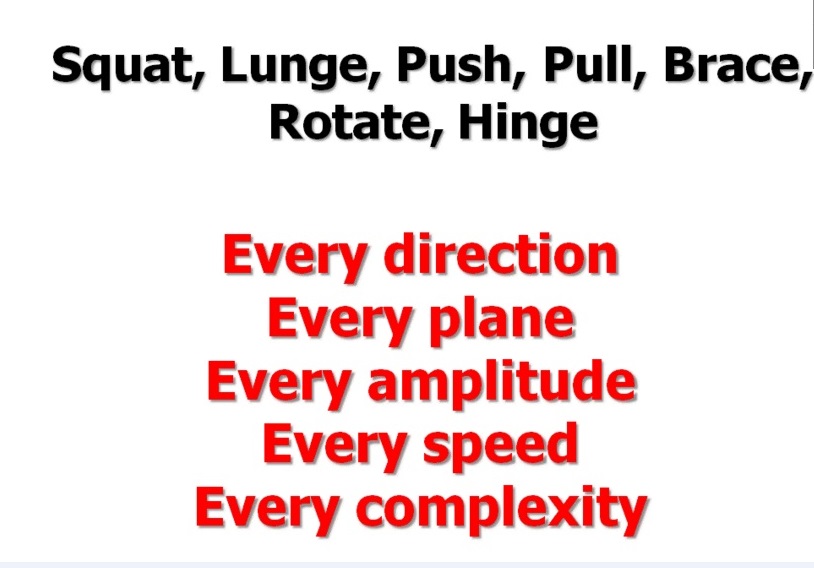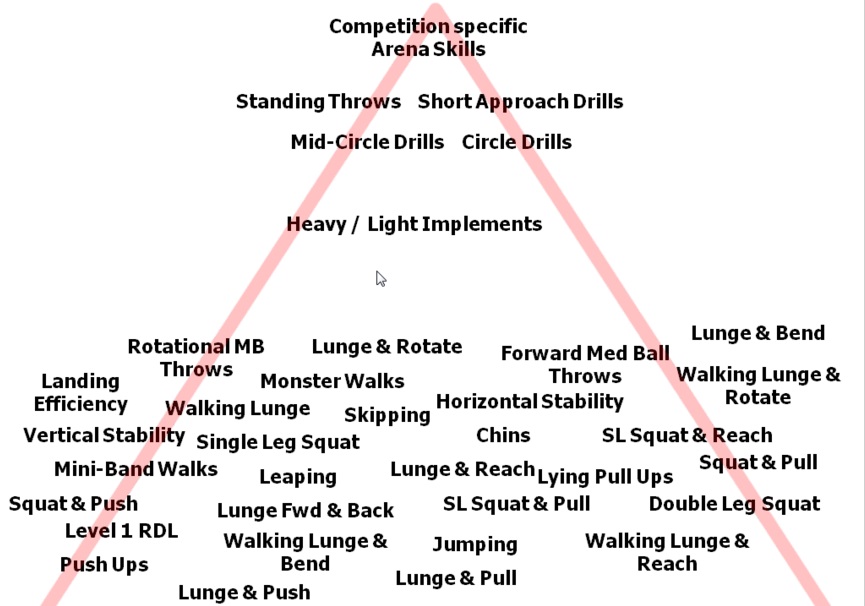Isn’t Getting Stronger Simple?
It has often been said that the simplest approaches work the best, and on this basis the simplest way to get stronger is to go out and practise lifting heavy things a few times a week. Right? Yes, providing the movements are efficient!!
I think we will all recognise when we see someone who is strong (or at least have a pretty good idea) but we also need to explore some of the barriers to being able to get the maximum amount of strength out of all our athletes, and what to do in those situations.
Let us not forget that one of the key roles of an S&C coach is to develop a complete athlete capable of performing at the highest level they can free from any physical limitation. In my experience there are S&C coaches who are more big ‘S’ and little ‘c’ meaning they know their way around a weights room and how to get their athlete STRONG but but it’s about making sure that the strength in the weights room transfers to their sport- more speed better conditioned.
S&C coaches need to understand that one of their key roles is to get their athletes FASTER and FITTER! The process of getting someone faster is no different to any other biomotor ability. It is a progressive journey and if you have already read the APA Philosophy page you will be familiar with the principle of Long-Term Athlete Development.
At APA we have created a 6 Stage Training System which is based on developing the athlete progressively. Please see the Figure below for an overview. This relates to not just speed but it underpins the principle of how to develop all biomotor abilities
The foundation level is all about developing the movement efficiency of the athlete so that they can move efficiently with the ability to move free from limitation or restriction. This level focuses on ‘Suppleness’ (mobility and stability). We also look at whether the athlete uses well-coordinated effort so that no movement is wasted-known as ‘skill’. I have already talked about the components of Skill in another page- so check it out here for an overview.
Table 1. APA 6 Stages of Development
|
Girls |
Boys |
||
|
Fundamentals |
Level 1 |
6-8 years old |
5-9 years old |
|
Learn to Train |
Level 2 |
8-10 years old |
9-12 years old |
|
Train to Train |
Level 3 |
10-12 years old |
12-14 years old |
|
Train to Train |
Level 4 |
12-14 years old |
14-16 years old |
|
Train to Compete |
Level 5 |
14-16 years old |
16-18 years old |
|
Train to Win |
Level 6 |
17 years old+ |
19 years old+ |
As you can see, an athlete will spend the majority of their formative years (pre-puberty) in Level 1 and Level 2 learning how to coordinate proper movements. As it relates to strength this means learning how to get the body into the proper positions to perform different types of weight lifting actions:
Kelvin Giles is a passionate advocate of the need to follow a movement efficiency journey that starts with developing basic movement patterns (squat, lunge, push, pull, brace, rotate, gait). Vern has been quoted many times before:
”Train movements, NOT Muscles!”
He went on to discuss the human body as an amazing thing that not only has joint articulations that require different amounts of MOBILITY and STABILITY (see Mike Boyle’s popularisation of the ‘Joint by Joint’ approach) but also connective tissue slings that mean movements at one place have an affect on the ENTIRE body!!
A lot of the problems that occur up the kinetic chain are due to a lack of movement efficiency from ‘toe nails to finger nails.’ We need to master these basic physical competencies!!!
Kelvin referred to various research papers supporting the point that shoulder health is directly related to movement efficiency at other places in the body (such as thoracic mobility).
Earn the Right through Physical Literacy
Getting back to Kelvin’s talk he went on to examine the reasons why our athletes get injuries while performing athletic skills such as the throw. He mentioned a few different issues. The first one is an obvious one but hugely important and often overlooked these days. This is the ability to develop a deep and wide reservoir of physical literacy.
Athletes have to earn the right to do more specific throwing practice. Physical literacy is build on a foundation of physical competencies (Squat, Lunge, Push, Pull, Brace, Rotate, Gait). These are then connected and integrated to create Movement Skills. On top of Movement skills you build Sports skills. It has to be done like that.
Physical Competencies
+
Movement skills
+
Sports skills
=
PHYSICAL LITERACY
Finally, Kelvin did a great job of showing how the we need to build the journey up by exploring more and more challenging movement puzzles that take us closer and closer to the performance skill.
And all these movements should be experienced using different constraints such as:
APA Strength development Pathway:
| Strength Focus | |
|
L1 |
Bodyweight skills: Crawling, partner work, medicine balls and soft resistance such as bands and swiss balls. |
|
L2 |
Muscular endurance : more formalised coaching of the weight lifting and resistance training methods using barbells and dumbells. Sets and reps prescription of 3-4 x 10-20 reps. |
|
L3 |
Hypertrophy: increase in load and decrease in volume. Sets and reps prescription of 3-5 x 8-15 reps. |
| Basic Strength: introduction to the sets and reps prescription of maximal strength using 5 x 5 and 4 x 6-8 reps using higher loads but with incomplete recovery. Back squat target of 1.0 x bodyweight for 5RM. | |
|
L4 |
Maximal Strength: challenge the athlete to overcome the greatest external resistance they can for the required reps with complete recovery. 3-5 x 3-5. Back squat target of 1.5 x bodyweight for 1RM, progressing to 2.0 x bodyweight for 1RM |
|
L5 |
Maximal Power: Train Anaerobic System using ‘jumps with weights’ starting with lighter loads progressing up to 16-32kg and 3 x 10-20 reps. This is known as a squat jump. Can progress to Kettlebell jump squats on boxes. Finally you can progress to vertical jumps with pauses where you pause after each single rep and can use loads approaching 40-60% 1RM (back squat). Where technique is adequate you can also progress to Olympic weight lifting derivates using 60-80% of 1RM Snatch and Clean. |
The Table above highlights how the skill of speed development progresses as younger athletes move out of the ‘Foundation’ stage and start to train the skills. Level 3 to Level 5 is associated with performance enhancement. We test and train biomotor abilities associated with gross athleticism such as strength and speed. This tells us about how efficient an athlete is at generating power! It’s important to test the skills under conditions of more stress by combining the skills with other ones as well as randomising and intensifying the movements!!! Finally we look at an athlete’s level of conditioning at Level 6. We test and train the ability to reproduce explosive movements without a decline in quality.
We will assess the athlete in all areas of the Peak Performance Body Pyramid all of the time but the distribution of time spent training the different qualities will be based on what the assessment shows and the athlete’s stage of development.
For more information on how to develop these qualities why not check out our next Coordination & Strength Training Workshop








